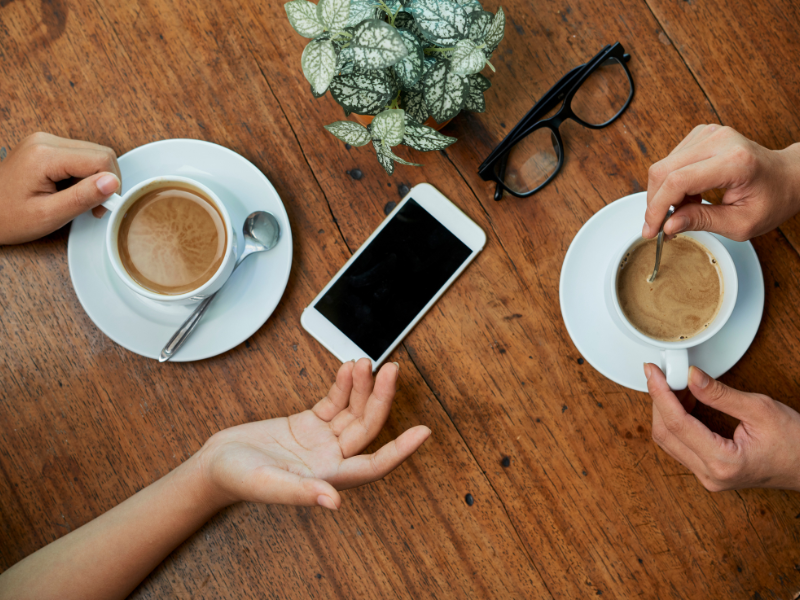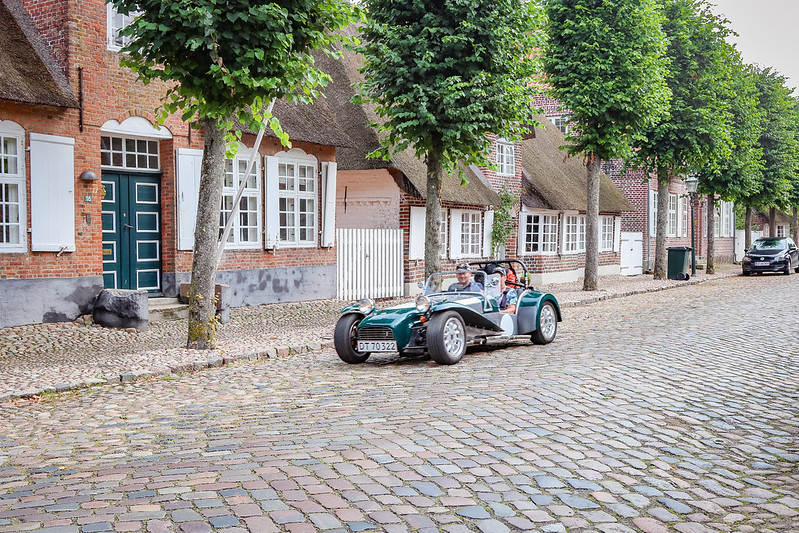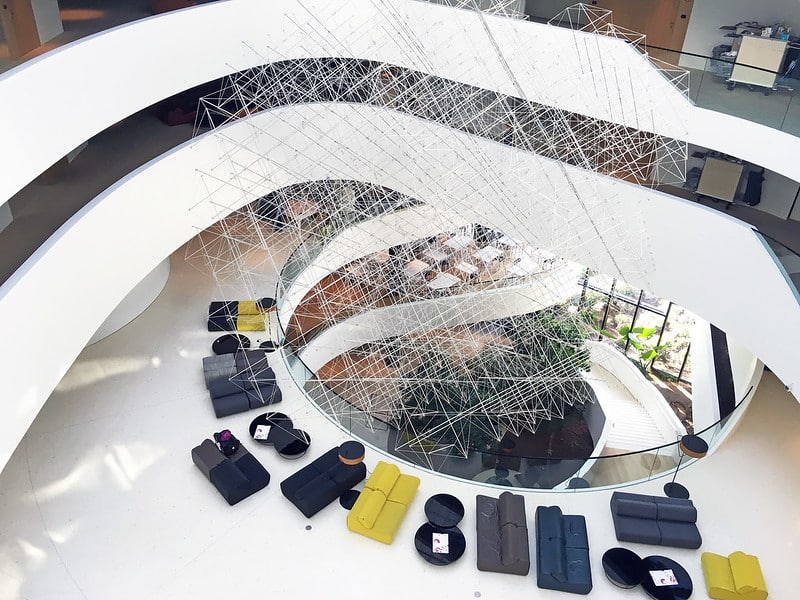How to say how are you in Danish (7 phrases & 10 replies)
Connect with locals by asking How are you in Danish.
As a Dane, I know that Danish sounds tricky at first, but with a little practice, you’ll get the hang of it.
In this post, I’ll dive into the simple phrase: how are you? We’ll look at the different ways you can ask the question, the proper pronunciation, and how to respond.
By the end, you’ll be ready to engage in a basic but genuine conversation with any Dane you meet. So let’s get started and add another handy expression to your language toolkit!
This post contains referral links for products I love. Adventurous Miriam earns a small commission at no extra cost to you if you purchase through my links. I appreciate your support ♡ Learn more
Do people in Denmark ask “How are you?” when greeting someone?
In Denmark, when we meet someone we don’t know well, our greetings are simple:
- Good morning
- Good day
- Good evening
- Hello
- Hey there
If we’re catching up with a friend or colleague after a while, we might go for a “How are you?” But we’re mindful that Danes take things literally.
That means, we’ll think about how we feel and might even start to share.
We don’t throw around “How are you?” lightly because it often leads to a dilemma about whether to ask back, trying to be polite but not wanting to seem insincere. Pretending to care when we don’t is frowned upon here—it’s better to be honest.
To greet a Dane respectfully, a firm handshake, a hi, and eye contact will suffice. We value genuine interactions, so we only say what we truly mean.

So, how to greet in Denmark?
In an informal setting, a firm handshake with eye contact does the trick. Remember to shake women’s hands first, then men’s, and do it again when leaving.
If you’re closer, a hug or wave is acceptable, too. And don’t just greet your friend—acknowledge everyone in the group to keep it respectful.
Danes are generally informal and will likely use your first name early on. We don’t use nicknames like Will for William unless it’s a friend or family.

How are you in Danish?
Okay, let’s take a look at 7 ways to say “How are you?” in Danish. And be prepared for an honest answer 🙂
1. Hvordan har du det?
- How to pronounce it: [vor-dan har doo deht]
- Meaning: How are you?
- Usage: Both informal and formal Danish greeting
‘Hvordan har du det?’ is a common way to ask someone how they are doing in Danish. This phrase can be used both casually with friends and in more formal situations.
2. Hvordan går det?
- How to pronounce it: [vohr-dan gor deh]
- Meaning: How’s it going?
- Usage: Both informal and formal Danish greeting
‘Hvordan går det?’ is also a common Danish phrase used to ask about someone’s well-being. It’s appropriate for casual conversations with friends as well as more formal interactions.
Read next: 10 fun facts about the Danish language
3. Hvad så?
- How to pronounce it: [vad so]
- Meaning: What’s up?
- Usage: Informal Danish greeting
‘Hvad så?’ is a casual greeting in Danish that’s equivalent to saying “What’s up?” in English.
It’s used among friends or acquaintances in laid-back, informal settings. While it’s a friendly way to greet someone, it’s not used in formal contexts.
4. Alt vel?
- How to pronounce it: [ahlt vell]
- Meaning: All well?
- Usage: Both informal and formal Danish greeting
‘Alt vel?’ is a common Danish expression used to ask someone if everything is fine or going well. It can be used in both informal situations, such as with friends, and formal settings, making it a versatile phrase for various social contexts. It’s a succinct way to show concern for someone’s well-being or to casually inquire about their current state.
5. Hvordan står det til?
- How to pronounce it: [vor-dan står deh teel]
- Meaning: How are things?
- Usage: Both informal and formal Danish greeting
‘Hvordan står det til?’ is a polite way to ask someone how they are or how things are going in Danish.
It’s suitable for both informal and formal situations, making it a flexible option for greeting someone, regardless of how well you know them or the setting you’re in.
This phrase is a more general inquiry about a person’s life or situation and can be used to initiate a conversation or simply as a greeting.
6. Har du det godt?
- How to pronounce it: [har doo deh goht]
- Meaning: Are you well?
- Usage: Both informal and formal Danish greeting
‘Har du det godt?’ is a direct way to ask someone if they are feeling well in Danish.
It’s an expression that can be used in casual conversations with friends, family, or acquaintances, as well as in more formal interactions.
7. Går det godt?
- How to pronounce it: [gohr deh goht]
- Meaning: Is it going well?
- Usage: Both informal and formal Danish greeting
‘Går det godt?’ is a Danish phrase used to ask someone if things are going well for them.
It’s a friendly way to check in on someone’s status or progress with something they’ve been doing or to simply greet someone by showing interest in their well-being.

10 common ways to reply to ‘How are you?’ in Danish
1. Det går godt – It’s going well
- How to pronounce it: [deh gohr goht]
- Meaning: It’s going well.
- Usage: Formal/informal greeting.
“Det går” comes from the verb “går” meaning ‘to go’, and “godt” means ‘well’. So, you are literally saying: It goes well.
2. “Jeg har det godt, tak” – I’m well, thank you.
- How to pronounce it: [yai har de goht, tak]
- Meaning: I’m well, thank you.
- Usage: Formal/informal greeting.
“Jeg har” comes from the verb “at have” meaning ‘to have’, “det godt” meaning ‘well’, and “tak” means ‘thank you’. So, you are literally saying: I have it well, thank you.
3. “Ikke så ringe endda” – Not too bad.
- How to pronounce it: [eek-keh soh ring-eh end-thah]
- Meaning: Not too bad.
- Usage: Informal/formal response. How we say it in Jutland 😄
“Ikke” means ‘not’, “så” means ‘so’, “ringe” means ‘bad’, and “endda” can mean ‘even’ or ‘actually’. So, you are literally saying: Not so bad actually.
4. “Jeg har det fint” – I’m fine.
- How to pronounce it: [yai har deh feent]
- Meaning: I’m fine.
- Usage: Formal/informal greeting.
“Jeg har” comes from the verb “at have” meaning ‘to have’, and “det fint” means ‘it fine’. So, you are literally saying: I have it fine.
5. “Det går okay” – It could be worse.
- How to pronounce it: [deh gohr oh-kai]
- Meaning: It’s going okay.
- Usage: Formal/informal response.
“Det går” comes from the verb “at gå” meaning ‘to go’, and “okay” means ‘okay’ or ‘acceptable’. So, you are literally saying: It goes okay.
6. “Det går semi” – So-so.
- How to pronounce it: [deh gohr semi]
- Meaning: So-so.
- Usage: Informal response.
“Det går” comes from the verb “at gå” meaning ‘to go’, and “semi” is a prefix meaning ‘half’ or ‘partially’, which in this context is used informally to indicate that things are neither good nor bad. So, you are literally saying: It goes semi-well.
7. “Jeg har det ikke så godt” – I’m not doing so well.
- How to pronounce it: [yai har deh eek-keh soh goht]
- Meaning: I’m not doing so well.
- Usage: Formal/informal response.
“Jeg har” comes from the verb “at have” meaning ‘to have’, “det” meaning ‘it’, “ikke” meaning ‘not’, “så” meaning ‘so’, and “godt” which means ‘well’. So, you are literally saying: I do not have it so well.
8. “Jeg er træt” – I’m tired.
- How to pronounce it: [yai er tr-et]
- Meaning: I’m tired.
- Usage: Formal/informal response.
“Jeg er” comes from the verb “at være” meaning ‘to be’, and “træt” means ‘tired’. So, you are literally saying: I am tired.
9. “Jeg er glad” – I’m happy.
- How to pronounce it: [yai er glahd]
- Meaning: I’m happy.
- Usage: Formal/informal response.
“Jeg er” comes from the verb “at være” meaning ‘to be’, and “glad” means ‘happy’. So, you are literally saying: I am happy.
10. “Jeg har det dårligt” – I’m feeling bad.
- How to pronounce it: [yai har deh dow-lee]
- Meaning: I’m feeling bad.
- Usage: Formal/informal response.
“Jeg har” comes from the verb “at have” meaning ‘to have’, and “det dårligt” means ‘it bad’. So, you are literally saying: I have it bad.

FAQ – How are you in Danish
How do you greet someone in Danish?
To greet someone in Danish, you can simply say “Hej,” which means “Hi”.
What does Tak mean in Danish?
Tak means ‘thank you’ in English.
How do Danes say cheers?
Danes say “Skål” when they want to say cheers.
More posts you might like
Save it!







